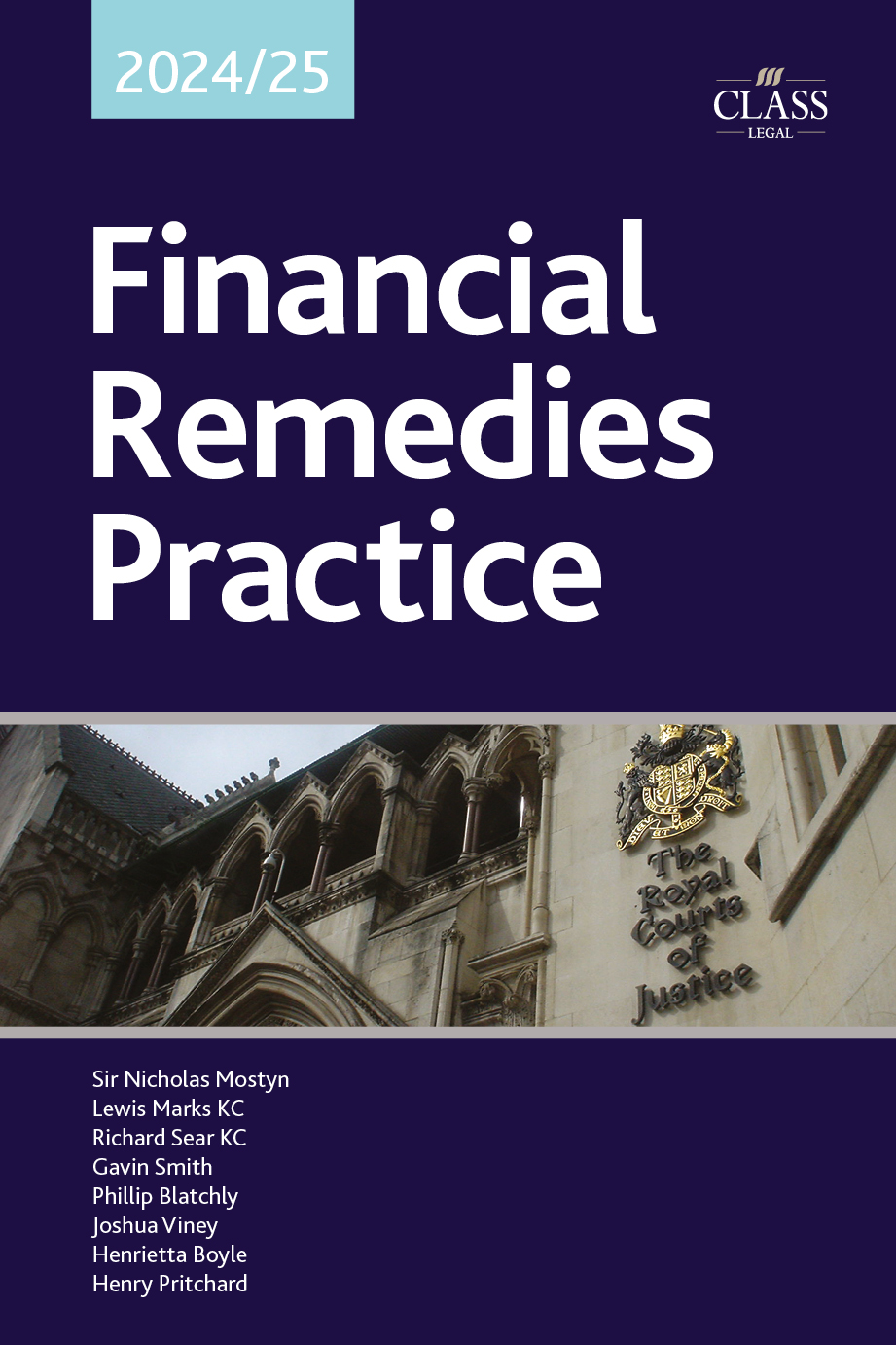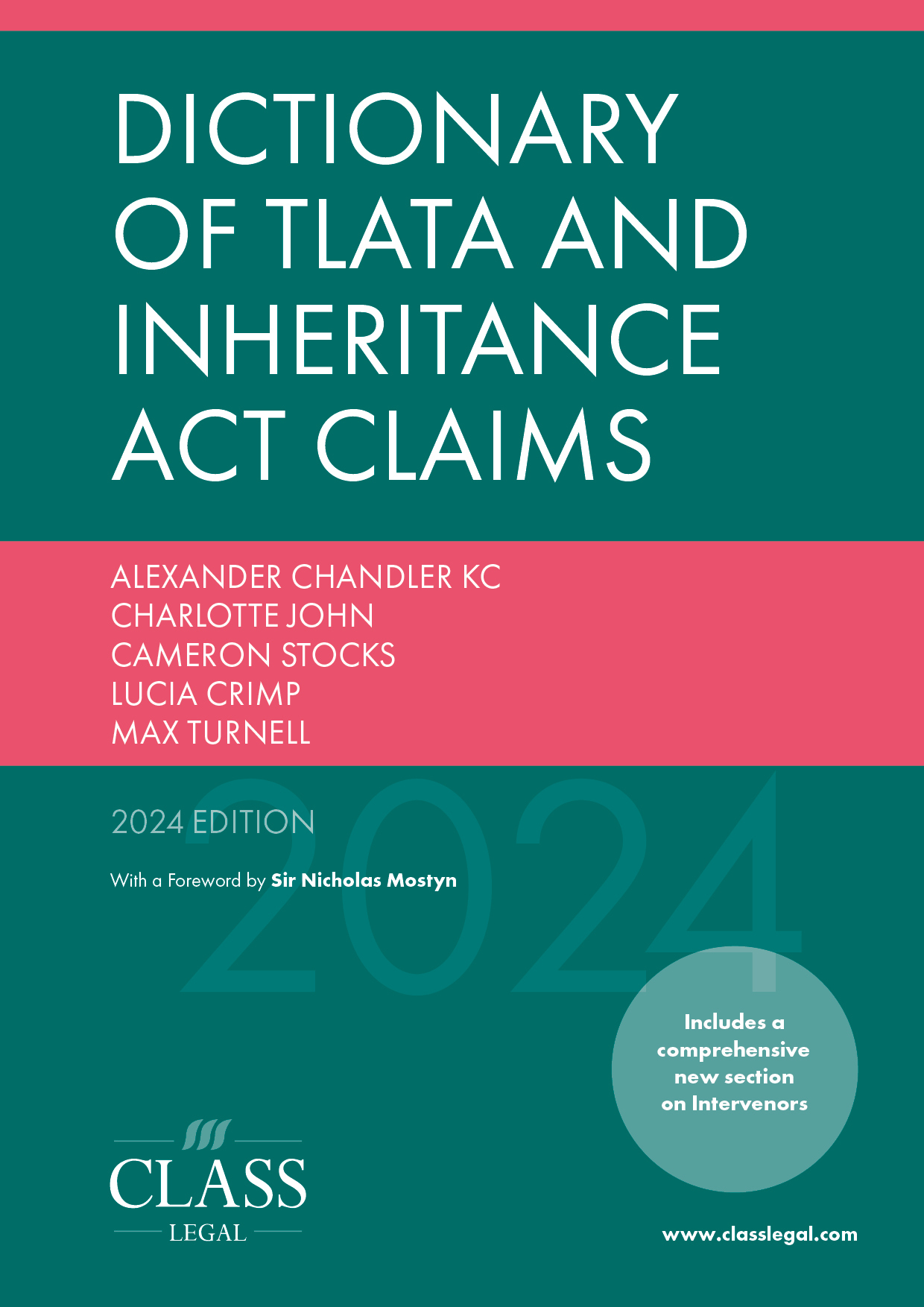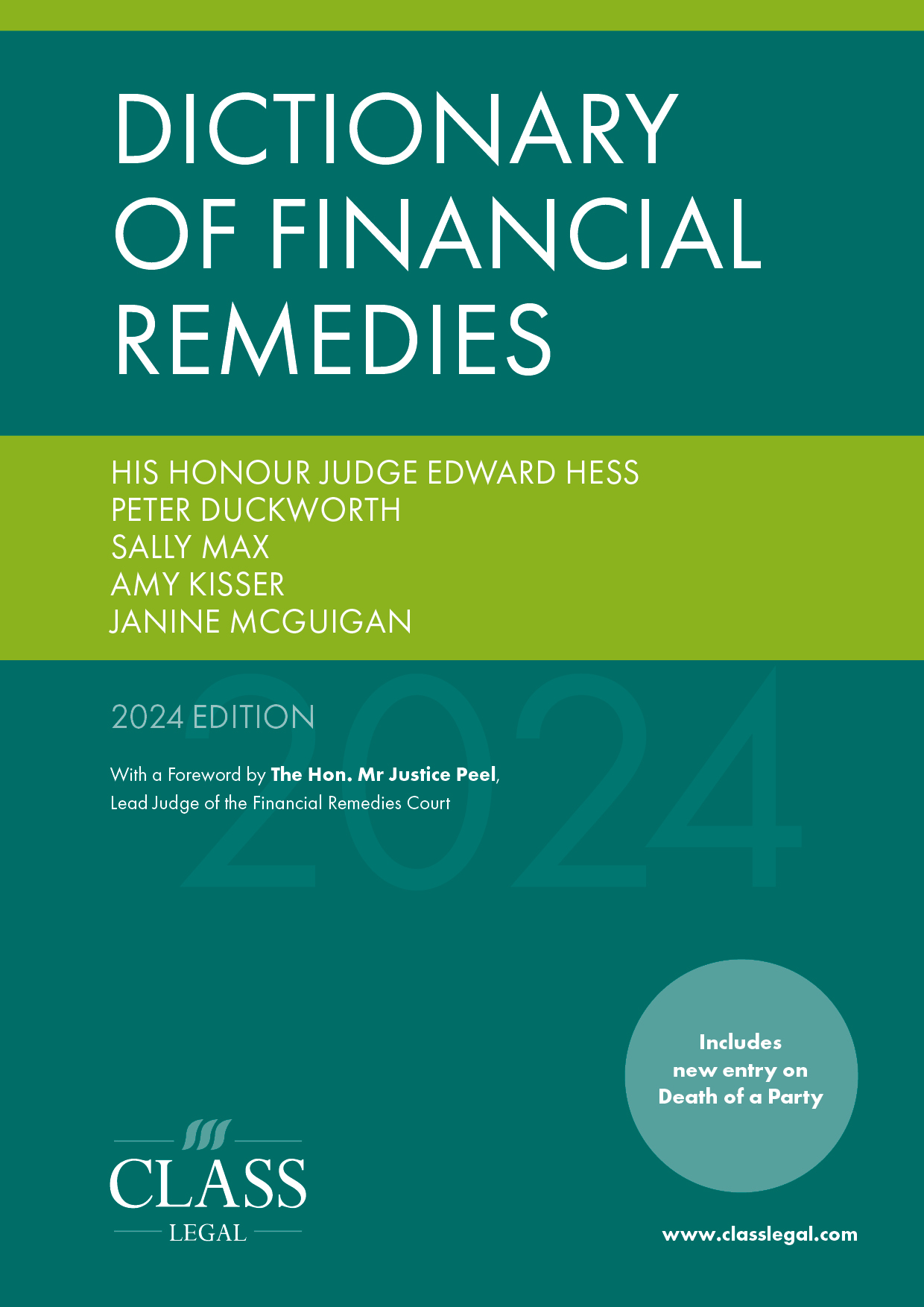‘Known Unknowns and Unknown Unknowns’ – Can a Change in the Law Be a Barder Event?
Published: 04/06/2024 09:00

Can a change in domestic law, resulting from judicial tergiversation, ever satisfy the Barder test?
The answer to this question depends, in part, on how widely or narrowly the Barder test is interpreted. In recent years it has often been interpreted narrowly – particularly by Mostyn J in DB v DLJ (Challenge to Arbitral Award) [2016] 2 FLR 1308 and more recently in BT v CU [2022] 2 FLR 26 where (at [8]) he stated that:
'The new event(s) must have been unforeseeable. Whether an event was unforeseeable must be proved to the same standard as that required in the Queen's Bench Division when determining an issue of remoteness: DB v DLJ at [36]–[41]. The probability of the occurrence of the event must have been so small that a reasonable person would have felt justified in neglecting it or brushing it aside as far-fetched.'
Framed in this way it might be argued that a change in the law could never satisfy this probability.
In S v S (Ancillary Relief: Consent Order) [2002] 1 FLR 992, Bracewell J considered whether the change in the law resulting from the decision of the House of Lords in White v White was a Barder event. In that case, a consent order had been made, in September 2000, under which the wife received assets of just over £1m while the husband retained over £4m. In the absence of previous reported authority as to whether a change in the law could constitute a supervening event in ancillary relief cases (as they were then known), she considered cases dealing with material change in other areas of the law before concluding, at [38], that as a general proposition a subsequent change in the law might constitute a supervening event. Thereafter, whilst acknowledging that she had not found this aspect easy to decide, Bracewell J concluded, at [43], that on balance the decision in White could constitute a supervening event. However, because at the time when the consent order was made the appeals in White had been heard with judgment reserved, it was widely anticipated to be a landmark decision, and the wife and her advisors knew or ought to have known that, she concluded that the event had been foreseeable and that was therefore fatal to her application.
As a result of this decision, many lawyers dealing with pending trusts of land claims while the decisions in Stack v Dowden [2007] 1 FLR 1858 and Jones v Kernott [2012] 1 FLR 45 were awaited advised their clients to suspend negotiations pending the delivery of judgment.
The question was recently posed again in De Renée v Galbraith-Marten [2024] 1 FLR 589. Cobb J considered (on paper) a father’s application for an order setting aside in part, or varying, the terms of a consent order in relation to a child periodical payments order made under CA 1989 Schedule 1, made following inter partes negotiations at a hearing in October 2022. The father’s case was that he had agreed the figure/formula because this had been expressly promoted by Mostyn J as the proper approach to the computation of maintenance above the CMS level, including in his judgment (reported as De Renée v Galbraith-Marten [2023] 1 FLR 957), but that, in James v Seymour [2024] 1 FLR 612, the same judge had subsequently promoted a different methodology. The father sought a variation of the child periodical payments order to align with the calculation in James v Seymour arguing, in essence (although he did not put in that way, no doubt as he was a litigant in person), that the change in the law resulting from James v Seymour was a Barder event.
At [32], Cobb J held that there could be ‘little doubt that the “guideline” earlier promoted by Mostyn J [had] effectively been abandoned by his judgment in James v Seymour’ and thereafter, at [34], he stated as follows:
‘This is a most unusual situation. I have considered carefully whether it can be said that the judgment in James v Seymour, in which the judge effectively rescinded the guidance which he himself had first formulated more than 20 years ago in GW v RW [2003] EWHC 611 (Fam) and expanded in 2020 in CB v KB, and which he had explicitly proposed to these parties, and which – crucially – had in my assessment led to settlement of the claim in the precise terms set out at [4] of the order, can truly be said to have “invalidated” the “fundamental assumption” on which the consent order was made. Having reviewed the material, I am satisfied that this development does indeed “invalidate” that “assumption” … There are not likely to be many litigants in a financial remedy case who would have felt comfortable in ignoring the clearest of steers from this most distinguished and pre-eminent of financial remedy judges; this litigant accepted the advice, adopted the “useful guideline”, and the subsequent consent order was founded upon it. The subsequent James v Seymour judgment has steered the court’s approach in a different direction; this change of direction was plainly unforeseen and unforeseeable at the time of the consent order.’
At [35], Cobb J concluded (in agreement with Gwynneth Knowles J in Akhmedova v Akhmedov and Others [2021] 1 FLR 667, and in acknowledged disagreement with Mostyn J in CB v EB [2021] 2 FLR 257), that even if the father’s case ‘stretched the “traditional grounds” [for setting aside an order under PD 9A, para 13.5] beyond comfort’, he was nevertheless entitled to fall back on the language of para 13.5, which appeared to contemplate grounds for the setting aside of a financial remedy order other than those ‘traditional grounds’ in order to achieve a just and fair result in fulfilment of the overriding objective.
Cobb J therefore went one stage further than Bracewell J – finding not only that a subsequent change in the law is a potential supervening event but also that, unlike the decision in White, the decision in James v Seymour was unforeseeable. The relevant paragraphs of the consent order were therefore set aside. Subsequently, in Galbraith-Marten v De Renée [2023] EWFC 253, Cobb J determined the quantum of the child periodical payments afresh.
It is interesting to note that arguably Cobb J need not have taken the route he did, given that much the same result could have been achieved through a variation of the original order. That being so, his decision to do so might be considered all the more noteworthy.
It is of note that S v S (Ancillary Relief: Consent Order) was not referred to in De Renée v Galbraith-Marten and neither was the arguably inconsistent decision in Crozier v Crozier [1994] 1 FLR 126. In the latter case, Booth J held (at p. 135) that the creation of the Child Support Agency (as it then was) by the Child Support Act 1991 did not constitute a supervening event sufficient to invalidate the basis of a consent order, since it was merely ‘a new administrative method’ by which the State could compel a parent to meet a pre-existing liability for maintain a child, bypassing the jurisdiction of the courts, and the fact that the sum required of a parent ‘may be greater under the new procedure than under the old’ was a consequence of the procedural change, rather than any new and unforeseen power vested in the State.
It is interesting to consider why a new court-mandated methodology for determining the liability to maintain a child should be considered sufficient to satisfy the Barder criteria when a new State-mandated one was not, particularly given that the former brought about only a change in ‘guideline’ figures (one which, in James v Seymour itself, Mostyn J stated, at [43], ‘at its highest … produces a loose starting point which a decision-maker can summarily choose to accept or reject without fear of appellate review’ and where the judge’s ‘decision to have no regard to the formula result lay within her unfettered discretion’), whereas the latter effectively brought into being a prescriptive formula for the quantification of child maintenance liabilities with very limited scope to depart therefrom.
As has been observed elsewhere, there is also an interesting discussion to be had about whether the refinement of the formulaic approach by Mostyn J in James v Seymour and his statement that it is more suited to cases where child periodical payments is not the main focus (e.g. applications under the MCA 1973 rather than CA 1989, Schedule 1) and ‘first time’ rather than variation applications was a change in law, properly-so-called, or, as Cobb J himself put it, a mere change in ‘guideline’ or ‘methodology’ and, if so, whether this is a material distinction or a distinction without a practical difference.
Insofar as there is a real difference, it may be considered notable that while changes in judicial guidance and changes in the law brought about by other means (i.e. legislative changes) might both be capable of being supervening Barder events, so far only a change in judicial guidance has actually been found to be a Barder event.
Arguably, that is somewhat counterintuitive. Given the jurisprudential axiom that judicial decisions never amount, or give rise, to ‘changes’ in the law, properly-so-called, but are merely declarations or interpretations which reveal any previous inconsistent understanding(s) to have been wrong, it might be considered surprising that Crozier, De Renée v Galbraith-Marten and, insofar as it was effectively held that the decision in White might have constituted a Barder event had it not been for its foreseeability, S v S (Ancillary Relief: Consent Order), were decided as they were; according to that scholarly view, after all, it was Crozier, and only Crozier, that truly concerned a change in the law.
As an aside, it is perhaps worth noting that the issues raised in James v Seymour and De Renée v Galbraith-Marten, as to the proper approach to the computation of child maintenance in non-CMS cases, may be of ever-increasing relevance. As has been observed, and as counsel for the appellant in James v Seymour noted, there are now 629,000 taxpayers earning more than £150,000 p.a., which is a 130% increase in the ten years since the £156,000 p.a. CMS cap was first introduced. Whilst the proportion of these tax payers who are separated parents with a liability for child support is unknown, it does seem likely that there will have been a significant increase in the number of actual or potential litigants earning above this figure, to whom this court-mandated approach to the computation of child maintenance may be highly relevant.












